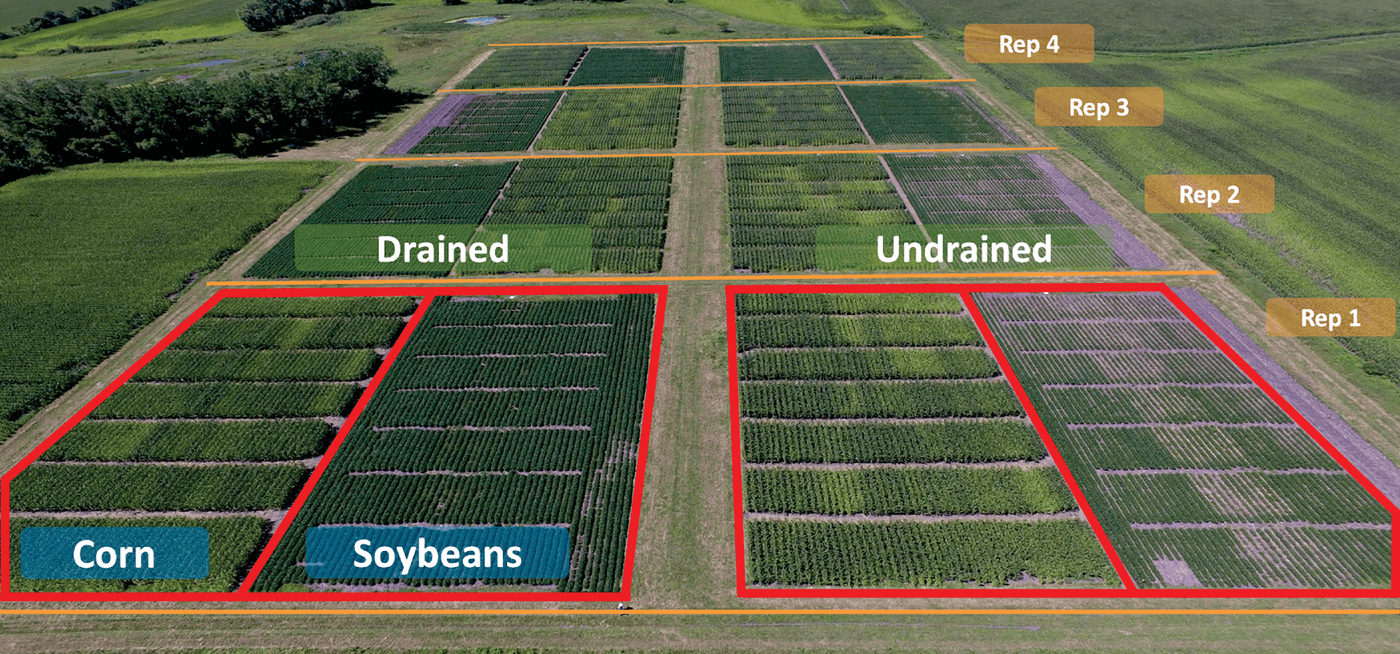Nitrous Oxide Emissions From Soybean After Corn Nitrogen Management

Nitrogen fertilization is important for crops, but it can lead to environmental degradation and nitrous oxide (N2O) emissions, which can be exacerbated by poor soil drainage. Although soybean grain typically removes more nitrogen than corn, most N2O emission studies are focused on corn because corn receives direct nitrogen fertilization. However, there are no studies looking at the residual effect of nitrogen fertilization to corn on the following year's soybean crop and N2O emissions under different soil drainage conditions.
Researchers studied the soybean phase of a corn–soybean cropping system to measure grain yield and N2O emissions from poorly drained soils with and without subsurface drainage tile. The previous corn crop received either no nitrogen or an optimum amount as a single or split application. Soil drainage had no impact on soybean yield; however, in wetter‐than‐normal growing seasons, subsurface drainage tile reduced nitrous oxide emissions. Nitrogen fertilization practices in the previous corn crop had no effect on soybean grain yield, nitrogen removal, or N2O emissions, but emissions were more than two times greater in corn.
The team concluded that adequate drainage and including soybean in rotation with corn can provide N2O mitigation benefits.
Adapted from
Fabrizzi, K. P., Fernández, F. G., Venterea, R. T., & Naeve, S. L. (2024). Nitrous oxide emissions from soybean in response to drained and undrained soils and previous corn nitrogen management. Journal of Environmental Quality, 53, 407–417. https://doi.org/10.1002/jeq2.20566
Text © . The authors. CC BY-NC-ND 4.0. Except where otherwise noted, images are subject to copyright. Any reuse without express permission from the copyright owner is prohibited.










